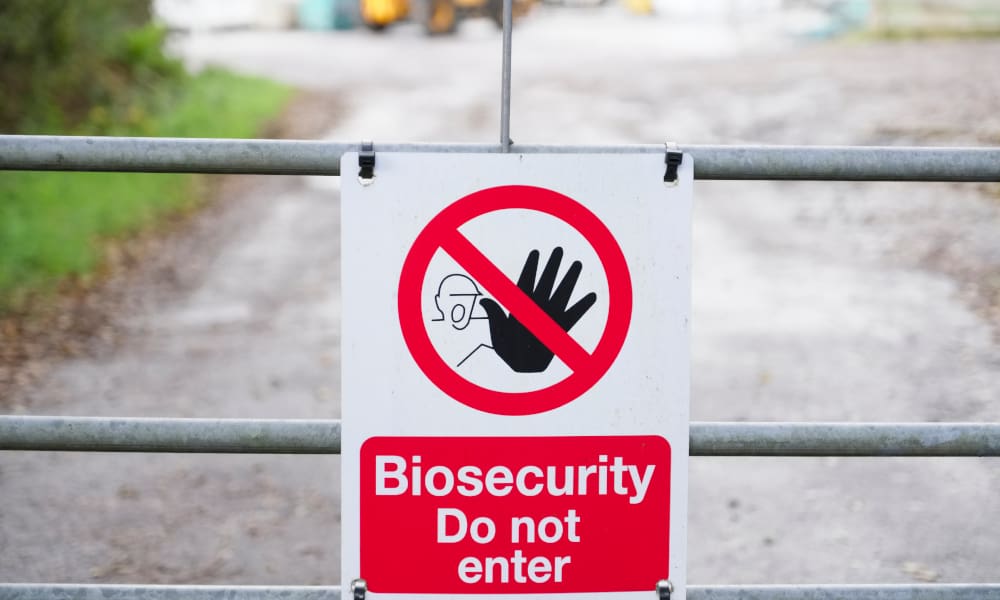AUSTRALIAN agriculture is at risk of increased disease outbreaks and pest incursions, weakened exports and damage to our global trading reputation unless its biosecurity system is given an urgent shakeup, according to a report by Australia’s national science agency, CSIRO.
The report, ‘Australia’s Biosecurity Future: Unlocking the next decade of resilience’, found Australia needs a more innovative, coordinated and collaborative biosecurity system if it is to keep up with the threat from increasing and severe biosecurity events.
 In the five years to 2017, the amount of biosecurity risk materials intercepted in Australia increased by almost 50 per cent.
In the five years to 2017, the amount of biosecurity risk materials intercepted in Australia increased by almost 50 per cent.
At the same time, the risk of biosecurity threats like pandemics are on the rise, fuelled by global trade and travel, urbanisation, climate change, biodiversity loss and antimicrobial resistance.
National Farmers’ Federation chief executive Tony Mahar said the prediction of increased risk comes after the absence in the October Federal Budget of any meaningful new funding commitment to strengthen the national biosecurity system and following the failure of the much anticipated biosecurity levy.
He said the report was a sobering read, which showed that a business-as-usual approach would not meet the challenges of the future and protect Australia from the potentially devastating impacts of exotic pests and diseases.
“A strong biosecurity system is fundamental to the success of Australia’s $60 billion agriculture sector – and to our ambition to grow to $100 billion in output by 2030,” he said.
“It is also central to the health of our natural environment, community wellbeing and the economy at large.
“This report clearly demonstrates that Australia needs a more innovative, coordinated and collaborative biosecurity system if it is to keep up with the threat from increasing and severe biosecurity events.”
Mr Mahar said Australia’s biosecurity system was simply too important to compromise.

Tony Mahar
“We know that the volume and complexity of biosecurity threats will continue to grow. In the five years to 2017, the amount of biosecurity risk materials intercepted in Australia increased by almost 50 per cent,” he said.
“The biosecurity system must keep pace and this important new report provides expert advice on how the system can be transformed to meet the challenges of the future. The biosecurity system of the future needs to be built on system connectivity – digitisation and enhancing data sharing across supply chains and enabling the role of industry and community in biosecurity responsibility through improved community engagement.
“A single pest or disease incursion has the potential to bring our agricultural industries to their knees, and the COVID-19 experience has brought home the message that biosecurity matters to all Australians, and a biosecurity breach can have far reaching economic, environmental and social consequences.”
Multiple threats
Mr Mahar said the agriculture sector was grappling with the impact of multiple new exotic pest incursions this year, including avian influenza and fall army worm, while the threat of other highly damaging pests and diseases such as African swine fever, khapra beetle, brown marmorated stink bug, foot and mouth disease and Xylella fastidiosa, which had spread around the world, looms large.
“This report is a reminder that all Australians – governments, industry, the community – have a role to play in delivering a strong biosecurity system, and we strongly endorse that message,” he said.
“The NFF will continue to call on the Australian Government to step up and ensure that the critical biosecurity functions it delivers to mitigate biosecurity risk at the border and pre-border are adequately resourced, innovative and fit for purpose.”
Seize the opportunity
CSIRO’s director of Health and Biosecurity Dr Rob Grenfell said the COVID-19 pandemic had increased community and public awareness of the importance of biosecurity.
“We need to take this unique opportunity to transform Australia’s biosecurity system so it can cope with the growing volume and complexity of threats,” he said.
“How Australia navigates the changes needed over the next decade will significantly impact the health of Australians, our communities, ecosystems and agricultural systems and food security into the future.”
Dr Grenfell said Australia had one of the strongest biosecurity systems in the world and a global reputation as a high-quality exporter, protecting environmental assets valued at over $6 trillion and saving Australian industries billions of dollars a year.
While the current model has served us well, the report found it needs to be enhanced to handle the growing biosecurity threats the nation faces otherwise Australia could be exposed to significant social, environmental and financial consequences.
The biosecurity system of the future needs to be built on digital, autonomous and interconnected platform technologies.
Recommendations
The report identifies 20 recommendations across three themes to shift the trajectory for Australia’s biosecurity future.
These themes are:
- System connectivity – digitisation and enhancing data sharing across supply chains and the human, agricultural, environmental and marine health sectors to ensure we identify and manage emerging risks.
- Shared responsibility – enabling the role of industry and community in biosecurity responsibility through improved community engagement; more systemic collaborations between Indigenous and non-Indigenous organisations and individuals; and working with industry to develop their role in surveillance.
- Science and technology – supporting the growth of novel tech-enabled start-ups that create business opportunities for biosecurity, as well as developing international biosecurity innovation priorities for the sector to focus and collaborate on.
Collaboration and innovation
Centre for Invasive Species Solutions chief executive officer Andreas Glanznig said transforming our biosecurity system could open new export possibilities for Australian companies, and further enhance our global standing.
“Collaboration and innovation are central to transforming our national biosecurity system so that it meets the challenges and pressures of the 21st Century,” Mr Glanznig said.
Plant Health Australia chief executive officer Sarah Corcoran said this was an investment in the health of our agricultural industries, communities, and unique natural environment.
“The advanced data sharing systems discussed in Australia’s Biosecurity Future would let governments, industry and researchers quickly respond to biosecurity threats, effectively collaborate and spearhead technological innovation,” Ms Corcoran said.
Animal Health Australia chief executive officer Kathleen Plowman said all Australians had a role to play.
“The 2019-20 bushfires and the COVID-19 outbreak highlight how interdependent our biosecurity system is – what happens in human health can greatly impact what happens in other sectors,” Ms Plowman said.
“Shared responsibility is all about harnessing the collective knowledge and capability of our citizens, our communities, our industries and our governments to ensure that all Australians are aware of their role in managing biosecurity risks and are working together to build the resilience of the biosecurity system.”
Sources: NFF, CSIRO
This was the second biosecurity report CSIRO released in recent years, following Australia’s ‘Biosecurity Future: Preparing for future biological challenges in 2014’, which identified 12 potential biosecurity megashocks that could impact Australia including the outbreak of a zoonotic (animal to human) disease such as COVID-19.
Download ‘Australia’s Biosecurity Future: Unlocking the next decade of resilience’ at: www.csiro.au/biosecurityreport

HAVE YOUR SAY